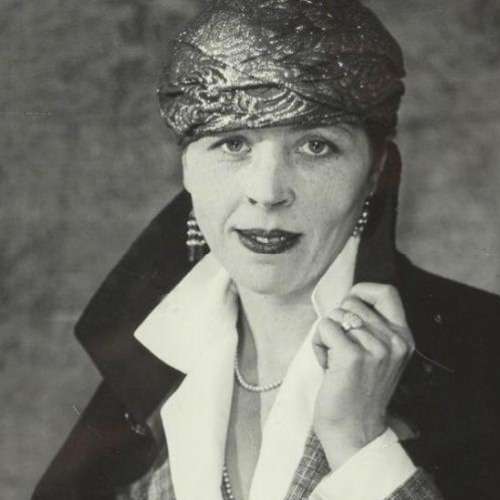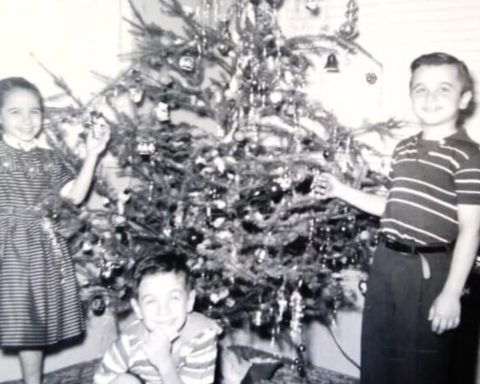Mother of beautiful Love! This little book of use has been winking at me for a while on one of the shelves of the bookstore Nautilus. A few days ago I decided to wear it, partly because of the sale, I’m not lying, and now that I read it, the value of it has tripled within me.
Wow “Libra”! And don’t let its pocket-sized size fool you, nor its ninety-four pages with large print. It contains only four short stories: Aller et return; A night among the horses; The valet and the passionwhose reviews I will offer you here, even with the hype of having discovered a wonderful author.
Aller et return
Phrase that in French means “Round trip”, an ideal title, likewise in French, no matter how snobbish it may be taking into account the American name of the author and the translation into Spanish that respected Gallicism. The story begins like this:On the train from Marseilles to Nice was a woman of great vigor…”, and culminates with a return trip, with the same woman, Madame Erling von Bartmann, a wealthy Russian widow who lived in Paris —those of us who have read Nina Berberova know that many people from Russia moved to Paris when the Soviets began to transform the country and the region.
Four titles by Nina Berberova, a late-successful and highly lucid Russian author
In this journey of Madame von Bartmann, the reader will have access to the wise advice of a hedonistic and calm mother to a young daughter, who recently lost her father.
The story has realistic, concise and beautiful descriptions. The level of lyricism that he reaches is exquisite, it is in the movements, in the dialogues, in the jumps and silences. The handling of symbols is subtle, like that torn glove in the hand of a wealthy woman who can change it whenever she wants, but keeps it that way, and which perhaps carries the meaning of attachment to what is her own, to the freedom to possess her own wounds and paths and, still, attend beauty, be beauty, despite prejudice.
In the story we see the tip of the iceberg and its shape, in order to intuit its true depth. It is a journey of recognition, of the reunion of a mother with her daughter, of watering the root that emerges different from the parent seed, like another generation.
The advice of the mother who begins like this is unmissable: “(…) One generation cannot be exactly the same as the other”. It is also a criticism of the return, since there was a one-way trip, of conservatism; an invitation to life, to freedom, to hedonism and its wisdom, to find the beauty that exists in all processes:
“Life is filthy; it’s also scary. There is everything in it: murder, pain, beauty, disease… Death (…) You have to know everything, and then start. You have to have a great capacity for understanding, or collapse (…) Man is rotten from the beginning (…) Rotten of virtue and vice (…) The value of your passions; It’s just the seasoning for all the horror…”
That is just a piece of everything that previously absent mother says to a daughter raised and indoctrinated by her father, as if to compensate, as if to invite her to be a free woman, like her…or at least try.
That moment in which she tries to straighten her gloves, after realizing the real state of things, defines for me the moral of the story: we cannot smooth anyone’s path, we must all learn from our own experience, let the relief of the chosen path teaches us to walk it.
A night among the horses
A story also full of symbols, in this case the horses and what they represent: the freedom to choose what to be in life, perhaps, and the opportunities to do and be what you really want, above any outside criteria.
A man works in a stable and becomes the lover of the mistress of the house, who fills his mind with ideas of greatness, to scare away mediocrity, to elevate him to a position that he does not really want to reach.
It is the story of the result that following other people’s “dreams” can have, or giving in to whims that move away from one’s own ideal. It is also a critique of the objectification of the worker as a mere human labor machine, in this case with a radius of action that encompasses even the sexual. Love should not be conditioned to the whims, nor disrupt the personal dreams of each one. The worst defeat is that of the imposed sacrifice and not that of the failed attempt to achieve one’s own goal. The protagonist of this story drags himself, literally through the grass, from the beginning, he remembers how he got there, and his condition of being dragged is the symbol of the worst of his drags: that of insufficiency and dissatisfaction. .
the valet
It is the story of Louis-Georges, a man who owns an organized and well-run estate, something he boasts about. The protagonist is surrounded by two maids, his faithful valet and his two regular aunts at the house, as well as a friend or lover, it is not clear. In the face of Louis-Georges’s illness, he is left in the care of his self-righteous aunts, thus preventing his mistress from visiting him more regularly and putting her assistant’s fidelity to the test. The focus of attention could be lost on this character, but without a doubt, in that final moment in which she asks the camera assistant about everything that happened, it is when the importance of employees is put on the tablecloth, and in this case, the person who becomes an accomplice and right hand. Like Sancho Panza’s Quixotization, constant company leads to transformation. We are also in the presence of a story that celebrates, why not, the fact that no one is essential, and that a good employer is the one who teaches his employees to carry things with or without his presence. In the same way, through the character of the friend, presumed lover, the ridiculous conservative gossip of those who do not understand the less conventional affections is condemned.
The passion
It is the story that closes this book, and describes the environment and possessions of a princess come to less by advanced age and the decline of his fortune. Secluded in her apartment, she often hosts Kurt Anders, “a Polish officer from a forgotten army who almost never appeared in uniform”a visitor who for thirty years came to see her once a month, and this time he resorts to a special visit.
“Walking straight into the awful,” he said, “that’s love.” What can be more frightening than old age for one who has enjoyed beauty and vanity of abundance? The story makes us think of true love, of the passion that survives the suspense of unfulfillment, as an eternal unfinished business. It makes us reflect on the importance of courage when it comes to declaring love, and from my reading, on the clumsiness of certain subtleties when they move away from direct questions and proposals. Anyway, if you like someone, tell them, and if you want or love, better, say it too.
A bittersweet defense of sincerity, and although it extols elegance and puts it into practice from its prose and style, it is also an allegation against squeamishness, which, as popular wisdom says: Get the dance out of me.
Who was Djuna Barnes?
Djuna was an American writer, born in 1892 in a town in New York, from a wealthy family. He lived in Paris in its bohemian and artistic heyday, and rubbed shoulders with several of the luminaries who are today the classics of various representations of art, such as Ezra Pound, James Joyce, Gertrude Stein, Peddu Guggenheim, Elsa von Freytag-Loringhoven, —who was also her lover for a while—, EE Cummings, among others.
His last forty years were spent secluded in his home in New York, and he cataloged himself as the most famous unknown writer in the world.

As I have guzzledDjuna was a “A rebellious woman, eager to try any new and transgressive experience of bourgeois morality, politics and artistic conventions, she captured her life in her works, in which the unconscious, oneirism, lesbianism, transgression and fascination appear. ”.
He suffered sexual abuse, it is said that by his father and even by his grandmother, which is not entirely clear. This was reflected in some of his works, as well as his experiences with women. She worked as a reporter and illustrator during one stage of her life for the brooklyn eagle.
The artist Thelma Wood was the love of his life, according to his own words; he was with her for eight years and the fruit of this union is the novel the night forestpublished in 1936, in which Barnes novelized his intimacies.
She is considered one of the great genius personalities of 20th century literature.


















